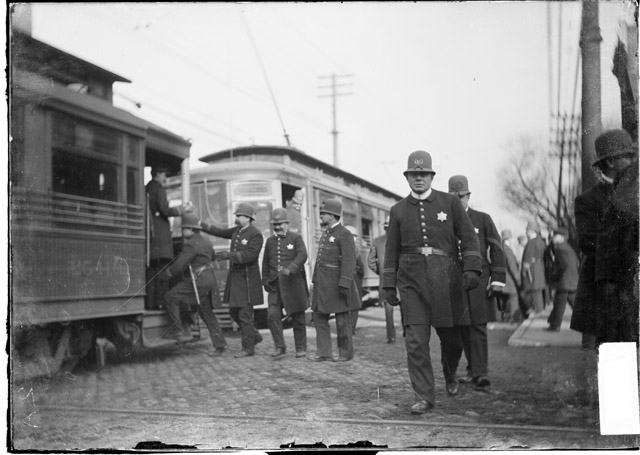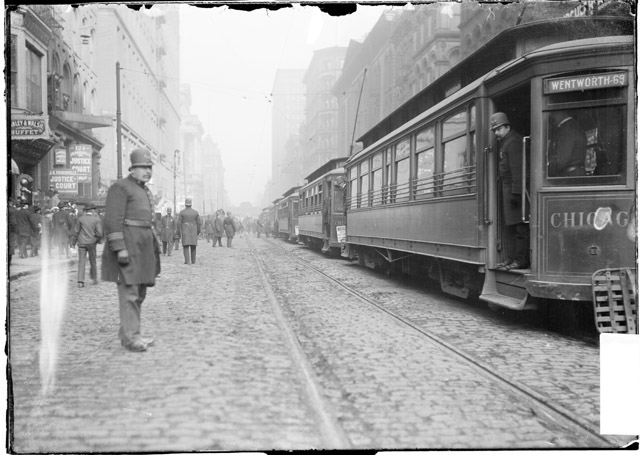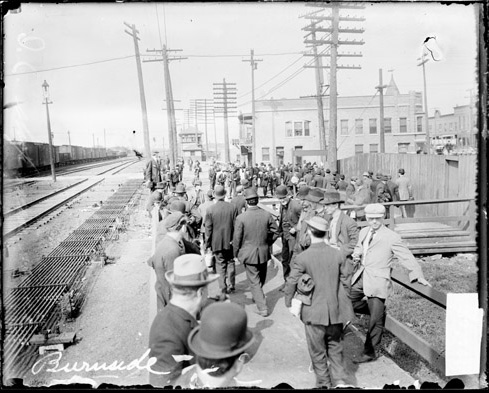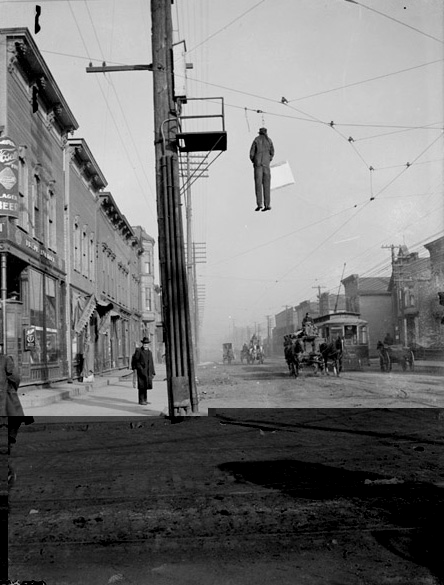Labor unrest, strikes, and the violence associated with demonstrations and picketing, and riots, were phenomena not just in Chicago, but across the country and internationally during this period. In Chicago, a number of killings in the police files were associated with labor demonstrations, and many other killings in situations of civil unrest were not reported.
Confrontations between labor and management, and between labor activists and police and other armed authorities, had long been simmering as ongoing disputes over wages and hours, the safety of working conditions, and the laying off of workers and their replacement by lower wage irregulars during times of economic hardship. In late July of 1877 the Great Strike, as it came to be called, shut down the entire railroad system in the United States, rolling westward from Boston and New York, to Baltimore and Pittsburgh, and in a few days reaching Chicago, the railroad hub of the country.
On July 24, 1877, violent confrontations began in Chicago. Some railroads, anticipating trouble, had moved their rolling stock outside of the city. Strikers, railroad workers and others, proceeded to make the partial freight stoppage complete. The strikers then closed the stockyards, construction jobs, manufacturing plants, and other businesses.
In response business owners and managers, the police, and city officials met at City Hall, armed themselves, and cleared the streets. The police and armed volunteers confronted the strikers and engaged in pitched battles on the following day. Afer hesitating to do so, Mayor Heath called for help from the United States army. The Twenty-Second Infantry, weary from long service and a march from Bismarck, marched into the city and bivouacked in a park. The First National Guard Regiment was also ready. Mayor Heath then called upon President Hayes to send in six companies of infantry.
In the meantime many civilians had organized their employees into armed companies, and had them sworn in as civil police. Civil War veterans were also on the street, as were many regular armed police. Armed confrontations took place on Halsted Street, at Sixteenth Street, on Archer Avenue, Goose Island, at the Burlington Yards, and many other locations. Every factory from Chicago Avenue to North Avenue was closed during the height of the strike.
The companies of the U.S. Infantry kept arriving. Volunteers continued to stream in to be sworn as special civilian officers. The Board of Trade had 100 volunteers sworn in from its own ranks.
Prisoners piled up at police stations. At the end of the Great Strike, hundreds had been killed, and thousands of federal troops and other armed militia occupied the city. The armed confrontations then moved from Chicago on to St. Louis, but the lines drawn in these battles remained for a long time.
See also:
- Bruce, Robert V., 1877: Year of Violence, Bobbs-Merrill Co. (New York, 1959).
- Pierce, Bessie Louise, A History of Chicago, 1871-1893, Vol. III (Chicago, 1957).
- Lukas, J. Anthony, Big Trouble - A Murder in a Small Western Town Sets Off a Struggle for the Soul of America. (New York, 1997). Although a murder trial in Idaho is the principal story of this book, a great deal of relevant history and background, including the history of socialism, the labor movement and unions, takes place in Chicago. The book includes a narrative of national and state politics of the period, and the social history and personalities of a number of key political and social figures prominent in Chicago. The book is also includes a great deal of valuable history about the role of the press, and individual newspapers and reporters in covering sensational trials during this period.






